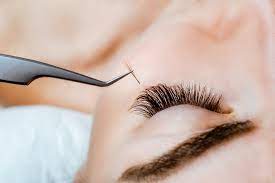
You’re at the gym for a weightlifting session. But something feels off.
You’re not a beginner and want to get your workout in for the day, but your body isn’t responding positively to the movement.
Or you’re an experienced runner, and your body can’t keep up with the pace at which you started while on a training run. You want to achieve a high level of exertion and are unsure how fast or slow you should go.
How do you make sense of what your body is telling you?
Autoregulation can help.
Writer and coach Nia Shanks (niashanks.com) said by email that autoregulation “is listening to your body and adjusting accordingly on any given training day.
“Feel amazing? Take advantage. Feeling weak? Do what you can but don’t push too hard, and come back stronger next time. A certain exercise not feeling good? Swap it out for a different one,” Shanks wrote.
Autoregulation can mean different things to different people. However, methods such as biofeedback and rates of perceived exertion (RPE) are effective ways to quantify your body’s response for consistency, regardless of how you’re working out.
Biofeedback
Biofeedback measures the body’s functions in order to control how it responds to stimuli.
Doctors, for example, use biofeedback therapy in alleviating anxiety or post-traumatic stress disorder.
With athletic training, biofeedback tests how the body responds to exercise movements. David Dellanave, a trainer and owner of the Minneapolis gym Movement, said the point of exercise is to create a net effect on your body, but not all effects are the same. Doing an exercise may have a positive effect one day but a negative effect the next.
“The goal with biofeedback is to quantify what that effect is in real time and make decisions based on it,” Dellanave said. “So you can pick, how does a squat affect me today? Is it good or is it bad? If it’s bad, what can I do that will give me a good response?”
Several biofeedback tests are effective for athletes, such as heart-rate variability (HRV), which measures the intervals between heartbeats. HRV testing is good for runners who want to autoregulate their training runs.
For strength training, Dellanave uses a range of motion tests, such as grip strength and toe touch. The toe-touch test is simple to do. First, before starting your workout, bend at the waist and try to touch your toes. Stop at the first point of tension, which becomes your base for the day.
The idea is to gauge what your fullest range of motion will be for the day, not to test your flexibility.
Then, perform the movement you want to do without weights. So, if you are deadlifting, perform a traditional deadlift. After one to two lifts, bend and stretch again. If you were able to get more range than at your first touch, your body responded positively to the traditional deadlift. If not, practice another deadlift, such as the sumo or Jefferson.
Then test again. Keep testing until you get a clear sense of what exercise your body will most respond to during that workout.
Stephanie Fowler Shaklee, a teacher and coach from Oklahoma, learned biofeedback from Dellanave’s wife, Jen Sinkler, but didn’t incorporate it into her routine until she started a new training program.
“The program called for a conventional deadlift, and that version wasn’t gelling for me,” Shaklee wrote via email. “Out of the blue, I began to throw in some biofeedback, and I navigated my deadlifts with the ‘answer’ that my body gave to me. Biofeedback allowed me to perform the specific lift, but with a slightly different movement variation.”
Shaklee now regularly uses biofeedback and said she has not experienced pain from lifting and doesn’t feel as if she’s forcing her training.
“We all, as a whole, tend to follow the rules and push through pain in a valiant effort to follow a specific training program. But once we truly solicit feedback from our body, biofeedback can be an additional resource that we can use to tune in to how our body is operating or feeling in the moment,” Shaklee said.
Rate of perceived exertion
The Borg scale, invented by Gunnar Borg, helps rate the level of intensity for a physical activity, or perceived exertion. The RPE scale quantifies how one feltinstead of whether an exercise was easy or hard.
If you go to a gym class, odds are you already use a variation of the Borg scale when the instructor asks for a “7” effort on a 1-10 scale.
Michael Tuchscherer, the founder of Reactive Training Systems and a gold medalist in powerlifting at the 2009 World Games, said via email that RPE helps rate the athlete’s overall performance instead of one’s emotions.
“The biggest thing is to have a system in place that helps you value your body’s feedback but not overvalue your emotions of the moment,” Tuchscherer said. “If you ignore your body’s feedback, then you miss out on one of the most critical tools to long-term success. If you misunderstand or misrepresent your body’s feedback as emotions, then you also miss out on the work that is required to see major improvements.”
Tuchscherer teaches his strength-training clients to use a 6-10 RPE scale. A 6 RPE is the equivalent of a fast bar speed while lifting with moderate effort, and a 10 RPE is maximum effort. Tuchscherer says the scale focuses on performance while one is doing a set and not just the weight lifted.
Kristine Becker, a trainer from Minneapolis, teaches RPE to her clients and uses it in her own training. She wrote via email that training with RPE is useful in her trail-running efforts, where measuring consistent pace is much harder to do than on roads. Becker wrote that RPE training gives her confidence that her overall effort is what she wants it to be, regardless of training conditions.
“If I haven’t gotten a lot of sleep or am stressed about other things, a 7/10 might result in a different pace, distance or volume of weight lifted, but it’s still my 7/10 for that day,” Becker said. “Using RPE helps me focus on doing what I can with what I have where I am, which keeps me on track and not constricted by the bounds of objective data, which may be harder to hit on rough days.”
Incorporating biofeedback and RPE takes practice. Shanks recommends that trainees follow their program for about six months, noting how they’re feeling in relation to their workouts. Once trainees understand how their body responds, autoregulation will be effective in optimal training.
“Like anything else, listening to your body takes practice, but it’s worth the effort,” Shanks said.
[“source-ndtv”]










